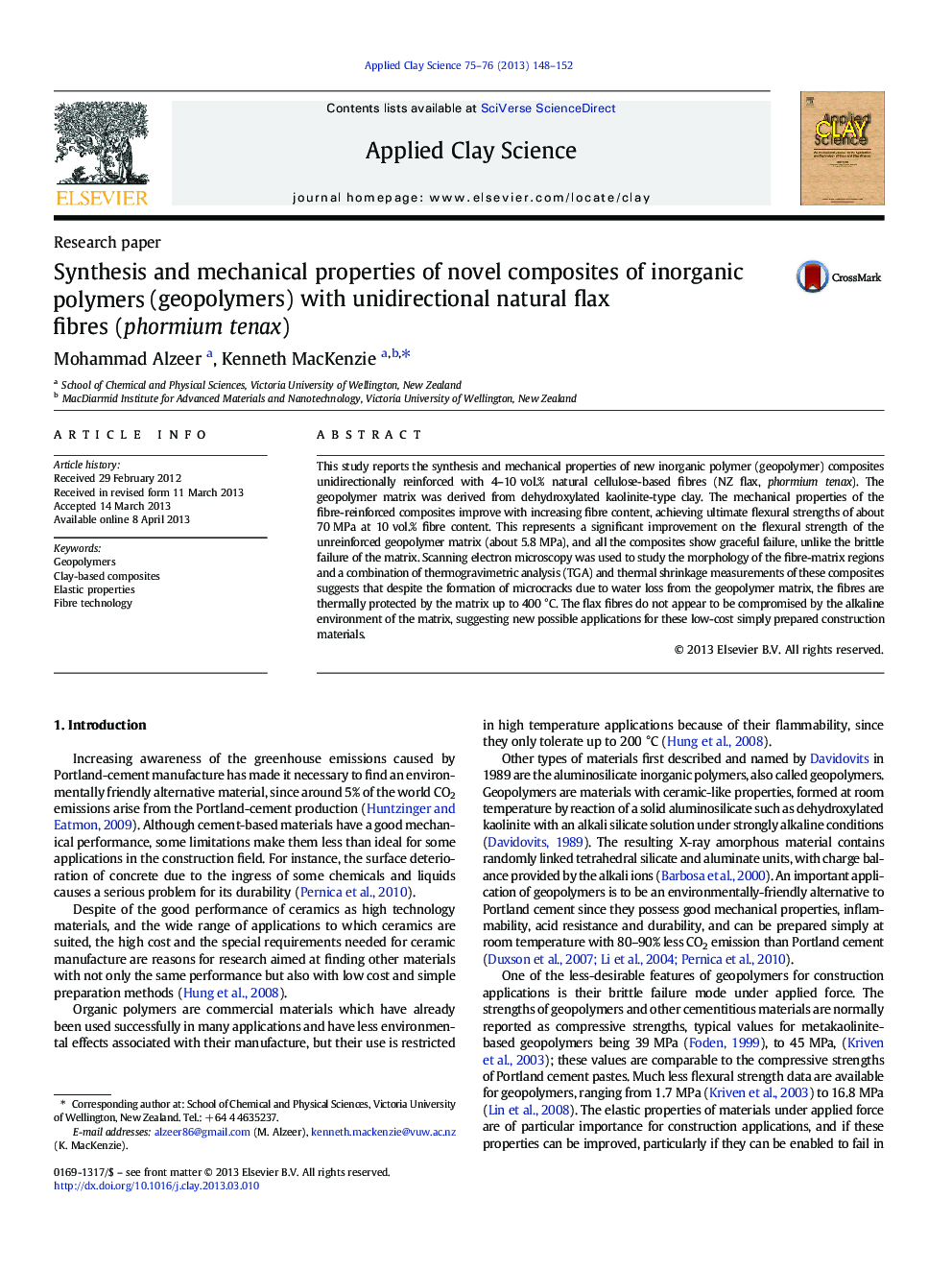| Article ID | Journal | Published Year | Pages | File Type |
|---|---|---|---|---|
| 1695048 | Applied Clay Science | 2013 | 5 Pages |
•New composites are reported based on clay-based geopolymers and flax fibres.•They have flexural strengths of 70 MPa compared with 5.8 MPa for the matrix•They fail gracefully rather than in the brittle mode of a geopolymer.•The geopolymer matrix provides thermal protection for the flax fibres.•The composites are environmentally-friendly, cheap and non-flammable.
This study reports the synthesis and mechanical properties of new inorganic polymer (geopolymer) composites unidirectionally reinforced with 4–10 vol.% natural cellulose-based fibres (NZ flax, phormium tenax). The geopolymer matrix was derived from dehydroxylated kaolinite-type clay. The mechanical properties of the fibre-reinforced composites improve with increasing fibre content, achieving ultimate flexural strengths of about 70 MPa at 10 vol.% fibre content. This represents a significant improvement on the flexural strength of the unreinforced geopolymer matrix (about 5.8 MPa), and all the composites show graceful failure, unlike the brittle failure of the matrix. Scanning electron microscopy was used to study the morphology of the fibre-matrix regions and a combination of thermogravimetric analysis (TGA) and thermal shrinkage measurements of these composites suggests that despite the formation of microcracks due to water loss from the geopolymer matrix, the fibres are thermally protected by the matrix up to 400 °C. The flax fibres do not appear to be compromised by the alkaline environment of the matrix, suggesting new possible applications for these low-cost simply prepared construction materials.
